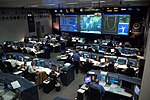For a period of over 7000 years, humans have inhabited the Galveston Bay Area in what is now the United States. Through their history the communities in the region have been influenced by the once competing sister cities of Houston and Galveston, but still have their own distinct history. Though never truly a single, unified community, the histories of the Bay Area communities have had many common threads.
Prior to European settlement the area around Galveston Bay was settled by the Karankawa and Atakapan tribes, who lived throughout the Gulf coast region. Spanish and French explorers traveled the area for many years gradually establishing trade with the local natives. In the early 19th century the pirate Jean Lafitte created a small, short-lived empire around the bay ruled from his base on Galveston Island before his being ousted by the United States Navy.
Following Mexico's independence from Spain, the new nation established long-term settlements, including Anahuac and San Jacinto, around the bay. Early settler revolts against Mexican rule occurred in the region, home to the final Texan Victory over the Mexican army during the Texas Revolution.
Following Texas' independence from Mexico and its annexation by the United States, economic growth was centered initially on agriculture and cattle ranching. Commerce grew between Galveston, Harrisburg and Houston in the later 19th century, and created additional economic opportunities as railroads were built through the Bay Area to connect these and other commercial centers.
In the early 20th century, the region gave birth to some of the state's earliest oil fields and refineries as the Texas Oil Boom took hold. Refining and manufacturing grew rapidly in the area, particularly around Baytown, Pasadena, and Texas City. The opening of the Port of Texas City, and later Barbours Cut and Bayport, gradually established the region as an important shipping center. As wealth increased in southeast Texas, resorts and other tourist draws developed in the Bay Area. During the 1960s the area became home of the Johnson Space Center, headquarters for the nation's crewed space program, which helped diversify the regional economy and began the development of an aerospace industry, and later other high-tech industries.










